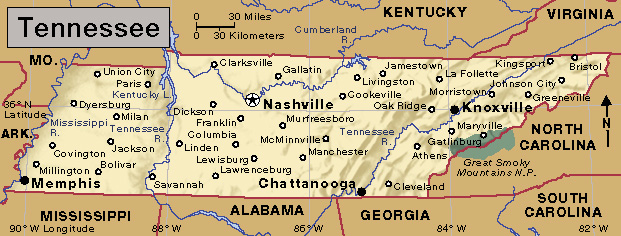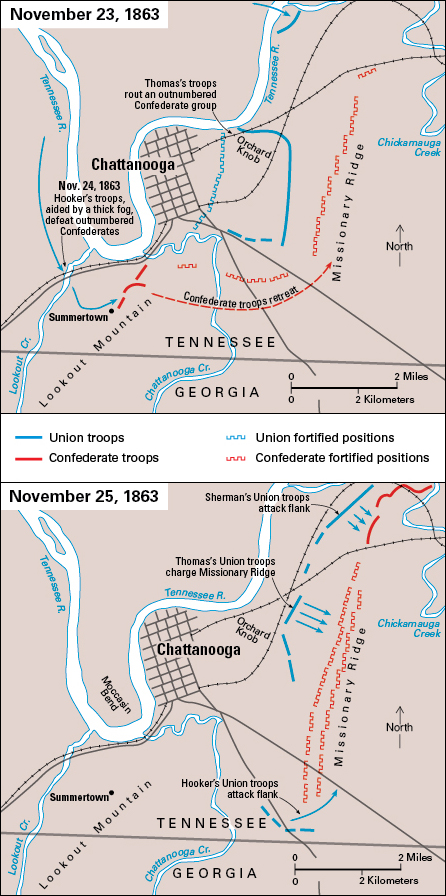Chattanooga, << `chat` uh NOO guh >> (pop. 181,099; met. area pop. 562,647), is an industrial city in southeastern Tennessee. It was a key city in the American Civil War (1861-1865). Chattanooga lies on both banks of the sharp Moccasin Bend of the Tennessee River, north of the Tennessee-Georgia border. Part of its metropolitan area lies in Georgia.

Chattanooga is in the Appalachian Ridge and Valley Region at the edge of the Cumberland Plateau. Lookout Mountain stands to the south. American Indians are thought to have called this mountain Chat-to-to-noog-gee, meaning mountain rising to a point. Some of the steep ridges have been cut through for the three interstate highways that intersect in the city. Chattanooga is joined to other cities by railroads, airlines, and river barge lines.

After the Civil War, Chattanooga became one of the chief manufacturing cities of the South. From the 1860’s to the 1960’s, the city was known for its iron and steel products. Today, the economy of Chattanooga depends heavily on services and on retail and wholesale trade. However, the city still has dozens of factories. Its chief manufactured products include clothing, food products, and plumbing and heating equipment. Chemical plants also operate in the metropolitan area, and factories produce synthetic yarn for the area’s carpet industry.
Chickamauga Dam to the east and Nickajack Dam to the west are parts of the Tennessee Valley Authority (TVA). The TVA is a federal corporation that controls floods, generates electric power, and works to develop the Tennessee Valley.
Places of interest in Chattanooga include its Civil War battlefields and the Tennessee Aquarium. The area’s natural beauty also helps attract many tourists. Chattanooga has a symphony and opera association, a community theater group, and a University of Tennessee campus.
During the late 1770’s, a group of Cherokee Indians established towns in the Chattanooga area. They became known as the Chickamauga. The Indians were conquered by white settlers in 1794 and were moved west in 1838. During this period, a chief named John Ross operated a trading post on the site of the city. It was called Ross’s Landing. Chattanooga received its present name when it was incorporated as a town in 1839. It received its city charter in 1851.

Chattanooga had only 5,545 inhabitants when the American Civil War broke out in 1861. But it had a strategic location, and metal industries developed to supply the Confederacy. The Battle of Chattanooga took place in November 1863 (see Civil War, American (Battle of Chattanooga) ). About 1,500 people lived in the city at the end of the war, but it had a population of 13,000 by 1880. Chattanooga’s most rapid growth began in the 1930’s, after the establishment of the TVA.
Chattanooga has a mayor-council form of government. It is the seat of Hamilton County.
